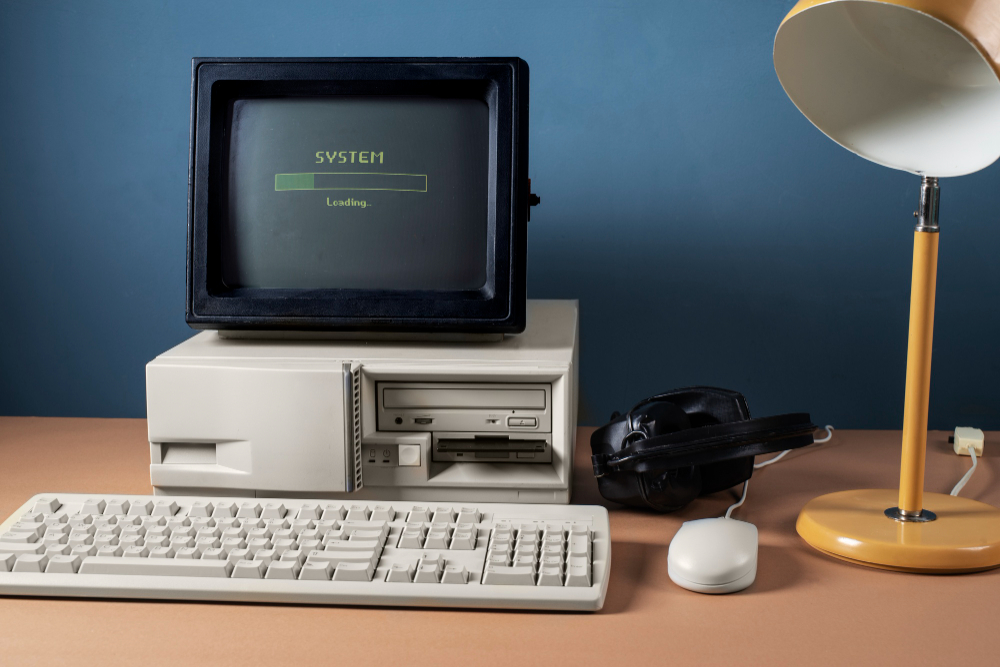In our modern world of 2025, technology is a sleek, silent, and almost invisible force. It lives in the cloud, on our impossibly thin smartphones, and in algorithms that anticipate our every need. Let’s take an exploratory tour through the world of timeless tech and understand the enduring charm of Vintage Gadgets.
It is efficient, powerful, and seamlessly integrated into our lives. Yet, for many of us, there is a growing fascination with the technology of yesterday. We find ourselves looking back with a fond nostalgia at a time when our gadgets were chunky, tactile, and had a charming, singular purpose.
This isn’t just a simple longing for the past. It’s a deep appreciation for a different kind of design philosophy and a different way of interacting with the world. There is a certain magic to the mechanical click of a button, the satisfying weight of a device in your hand, and the deliberate, focused nature of a tool that did one thing exceptionally well. This article is a tribute to that magic.
What Gives Vintage Gadgets Their Enduring Appeal?
Before we dive into specific examples, it’s worth asking: why do these obsolete devices still hold such a powerful grip on our imagination? The appeal is rooted in several key factors that stand in stark contrast to our current digital landscape.
1. Their Tangible and Tactile Design: Unlike the smooth, featureless glass slabs of today, Vintage Gadgets were designed to be physically handled. Think of the satisfying clunk of a rotary phone’s dial returning to its position, the percussive strike of a typewriter key hitting paper, or the deliberate press of a Walkman’s “Play” button. These devices offered rich sensory feedback. They had weight, texture, and mechanical parts that moved. This physicality created a deeper, more memorable connection between the user and the object.
2. Their Focused, Single-Purpose Nature: A modern smartphone is a marvel of multitasking, but it is also a source of endless distraction. In contrast, most vintage tech did one thing. A Game Boy played games. A Polaroid camera took instant photos. A Walkman played music. This single-minded purpose fostered a state of deep focus and immersion. When you used these devices, you were fully engaged in that one activity, free from the mental clutter of notifications, emails, and social media alerts that define our modern experience.
3. The Powerful Patina of Memory: Perhaps the most powerful element is nostalgia itself. These gadgets are inextricably linked to our personal histories and formative years. For those of us who grew up in cities like Vadodara, the family’s first television wasn’t just a screen; it was the gathering place for watching Ramayan or a nail-biting cricket match. The first pager wasn’t just a communication tool; it was a symbol of growing up and being important. These Vintage Gadgets are vessels for our memories, and their charm is amplified by the cherished moments they represent.
A Gallery of Timeless Tech: Exploring Iconic Vintage Gadgets
Let’s explore a few key examples that perfectly embody this timeless charm.
1. The Rotary Telephone
The classic black Bakelite rotary phone was, for many Indian households, the first and only link to the outside world for decades. Its appeal lies in the ritual of its use. Making a call was a deliberate, physical act. You would anchor your finger in a numbered hole and pull the heavy dial in a satisfying arc, rewarded by the mechanical whir as it slowly returned. There was no redial button, no call waiting. Each call was an intentional event, a stark contrast to the effortless, often thoughtless, tapping we do today. This device represents an era of more patient and purposeful communication.
2. The Polaroid Instant Camera
In an age where our phones can hold tens of thousands of digital photos, the magic of a single, physical Polaroid picture feels more precious than ever. It was the ultimate party gadget. You would aim, shoot, and the camera would whir and eject a blank square. The whole room would then gather around, waving it in the air (even though you weren’t supposed to), watching in shared anticipation as a memory slowly faded into existence. Each photo was a unique, one-of-a-kind artifact. You couldn’t take a hundred shots to get the perfect one; you had one chance to capture the moment, making that moment feel all the more special.
3. The Valve or Transistor Radio
Long before Spotify and podcasts, the radio was the heart of the home. Whether it was a large, glowing valve radio from a grandparent’s generation or the more modern transistor radio that became popular in the 70s and 80s, these devices were our primary source of news, music, and entertainment. The experience was defined by the crackle of the speaker as it warmed up and the slow, careful process of turning the tuning knob to find a station like All India Radio or BBC World Service. It was a shared listening experience that brought families and communities together.
4. The Nintendo Game Boy
Released in 1989, the Game Boy was not the most powerful handheld console, nor did it have the best screen. But its design and library of games gave it a charm that remains unmatched. Its iconic chunky grey shell, the pea-soup green screen, and the unforgettable ting of its startup sound are pure nostalgia. The beauty of the Game Boy was its simplicity. It was a dedicated portal to fun. When you were playing Tetris or Super Mario Land, you were completely immersed, free from any other digital distraction. It is one of the most beloved Vintage Gadgets for a reason.
5. The Manual Typewriter
The typewriter represents the ultimate in tangible creation. For writers and professionals of a bygone era, it was the essential tool of their trade. The experience was a symphony of mechanical sounds—the firm, percussive clack of each key striking the paper, the rhythmic movement of the carriage, and the satisfying ding at the end of a line. There was a finality and a focus to writing on a typewriter. You couldn’t endlessly delete and rewrite; each word required thought and intention. It was a tool that demanded mindfulness from its user.
The Modern Renaissance of Retro Tech
The appreciation for Vintage Gadgets is no longer just about looking back. It’s actively influencing modern trends. The resurgence of vinyl records and cassette tapes shows a desire for a more physical and intentional music-listening experience. The popularity of “dumb phones” or minimalist launchers for smartphones reflects a growing movement of people actively seeking to escape the distraction economy. Indie video games often use pixel-art aesthetics that directly pay homage to the 8-bit and 16-bit eras. This modern renaissance proves that the charm of these old devices is truly timeless.
Conclusion: The Soul of the Machine
The Vintage Gadgets of the past do more than just make us feel nostalgic. They remind us of a different relationship with technology—one that was more focused, more tangible, and in many ways, more human. They show us that the value of a device isn’t just measured by its processing power or its number of features, but by the quality of the experience it provides. While we may never go back to rotary phones and cassette tapes, the enduring charm of these timeless machines holds a valuable lesson for our hyper-connected present: sometimes, the greatest innovation is simplicity.


